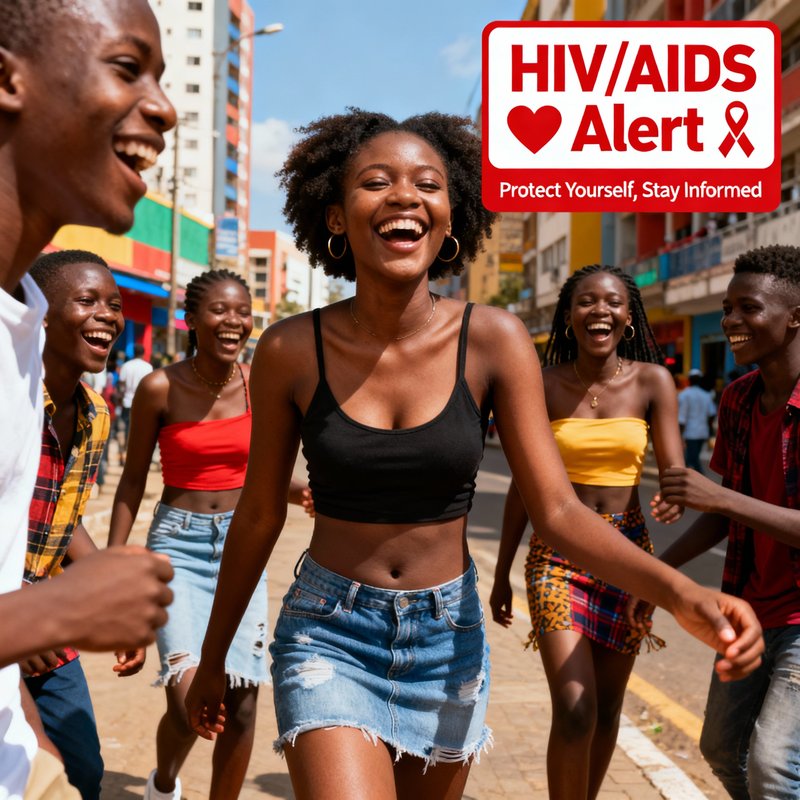Kenya’s HIV Surge 2025: Reckless Sex, Low Condom Use, and a Vaccine on the Horizon
Kenya is facing a new surge in HIV infections in 2025—despite years of progress. Latest data shows more than 20,105 new cases reported this year, and the numbers continue to rise as Gen Z and university students abandon basic protection.
The Alarming Data—And Where It’s Worst
More than 1.32 million Kenyans are now living with HIV, with Nairobi, Homa Bay, Migori, Kisumu, and Nakuru showing the highest infection counts. Experts warn: this spike is no coincidence. Condom use has dropped to some of its lowest rates in two decades.
| County | People Living with HIV | New Infections | Prevalence (%) |
|---|---|---|---|
| Nairobi | 151,916 | 2,183 | 3.6 |
| Homa Bay | 104,317 | 1,985 | 11.4 |
| Migori | 99,510 | 1,603 | 11.1 |
| Kisumu | 94,000 | 1,210 | 10.9 |
| Siaya | 93,368 | 985 | 9.8 |
| Nakuru | 65,149 | 1,185 | 5.5 |
| Mombasa | 53,718 | 949 | 4.8 |
| Kakamega | 51,067 | 823 | 3.3 |
| Kisii | 48,202 | 727 | 3.1 |
| Lowest: Wajir | 861 | 8 | 0.1 |
Gen Z: A Generation Almost “Over” Condoms
Condom use among young people—especially Gen Z—has plummeted to as low as 2 to 4 percent. Compare that to WHO’s recommended 40 condoms per man per year: Kenyan men average just 14. Many Gen Zs started sexual activity at age 11 or 12, and most have never used a condom—by choice. Interviews paint a picture of a generation that sees “raw” sex as more exciting, and condoms as either “uncomfortable” or “unnecessary.”
Interviews with Kenya’s Youth
Brian, 23 (Egerton University, HIV-positive): “I met her at a club in Nakuru and we hooked up the first night. She told me she was from Egerton Njoro. We didn’t use protection—she said it was ‘never sweet with rubber.’ I never thought it would be me, but late last year, I tested positive.”
Faith, 21 (JKUAT student):
“I rarely use condoms with my boyfriend. To be honest, I hate the feeling. And sometimes, they give me a rash—I think I’m allergic.”
Kevin, 22 (University of Nairobi): “I’ve had maybe eight partners this year. Only two times did we use protection. None of my boys use them. Most girls I meet don’t like condoms. They say, ‘Go raw, or don’t bother.’”
Sharon, 20 (Kisii): “I’ve never bought a condom. If my boyfriend doesn’t have it, we just do it anyway. Condom sex is not nice. No feeling.”
Recklessness in Sexual Activity
University and college campuses from Nairobi to Kisumu have become hotspots. Students—many with multiple partners—admit casual unprotected encounters are the norm. Drug and alcohol use fuel riskier choices. Social media “hookups” are common, and often, condoms aren’t even discussed.
Reasons given most by youth for skipping condoms:
- “It ruins the mood.”
- “I trust my partner.”
- “Feels better without.”
- “I’m allergic.”
- “I’ve never felt the need.”
The HIV Vaccine—Is There Real Hope?
Kenya is expected to begin rolling out the injectable HIV prevention drug Lenacapavir by early 2026. For the first time, a twice-yearly shot will be affordable for most Kenyans at about KSh 5,000 per year (around $40). The move follows a global deal with the Gates Foundation and Indian manufacturers. Experts say this could transform HIV prevention—if youth are willing to take it.
Current HIV care costs remain high: antiretroviral therapy (ART) averages KSh 15,000 per patient annually, while the vaccine promises wider reach at lower cost. However, mass education will be needed to reach Gen Z and those already taking dangerous sexual risks.
The Bottom Line
Kenya’s HIV epidemic is being driven by risky sexual behaviors—especially among young people who see condom use as “old school.” A new vaccine offers hope, but unless habits change, infections may keep climbing.
It’s time for open conversations. Sex can be empowering—but without protection, the price is steeper than ever.



